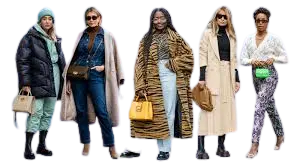A Threat to our Globe environment. It may seem like cheap clothing but there is a high environmental impact and hidden cost in our environment. So we are talking about ‘Fast Fashion’ becoming popular over the past few decades from approximately 1980/1990 to so far, with the rise of global supply chains and the growth of e-commerce making it easier for retailers to produce and sell large quantities of clothing at low prices. The textile and Apparel industry has a huge environmental impact. However, there has been growing concern about the social and environmental impact of fast fashion and many consumers and industry experts are calling for more sustainable and ethical approaches to fashion production and consumption. I am present here about what is Fast Fashion, its Environmental Impact, and the top brands of Fast fashion doing business around the world. Hope you would love this article.
What is Fast Fashion?
A design, manufacturing, and marketing strategy called “fast fashion” is geared toward producing large quantities of garments and clothing quickly. Rapid fashion garment production utilizes trend replication and low-quality materials in order to provide inexpensive fashions to the final consumer. Fast fashion spread as a result of more affordable, quick manufacturing and shipping processes, customers’ growing appetite for contemporary fashions, and consumers’ increased purchasing power—particularly among young people—to satisfy these desires for fast gratification. Fast fashion is posing a threat to the established clothing labels’ practice of releasing new collections and lines on a systematic, seasonal basis as a result of all of the aforementioned factors. In order to keep current, fast-fashion retailers frequently launch new products several times in a single week.
Let’s first discuss the international fashion industry before getting into the specifics of this hot topic. Fashion describes the trends, designs, and styles of apparel, accessories, and beauty goods that are in style or in demand at a given period. In addition to clothing and accessories, fashion can also refer to jewelry, haircuts, makeup, footwear, and even home furnishings. The industry is continually changing and evolving, with new trends appearing as aging ones disappear over time. The fashion industry is an exciting and dynamic sector that is always developing and responding to shifting consumer trends and market factors. Global fashion is, in general, a dynamic and complicated industry that is continuously changing and adjusting to shifting customer preferences and market factors. The global fashion industry does, however, also face a number of issues with regard to sustainability and moral manufacturing. The welfare of industry workers is a major concern, particularly in developing nations where labor rules may be laxer, as is the influence of fashion production and consumption on the environment.

Fast Fashion Environmental Impact
Fast fashion places a strong emphasis on efficiency, quickness, and affordability. Manufacturers frequently use cheaper, lower-quality materials and low-cost labor, frequently in developing nations, to accomplish this. This may lead to unfavorable working conditions for factory workers and may play a role in environmental issues like excessive use of natural resources and waste generation.
Fast fashion is harming the environment, workers, and communities in a number of ways. Here are some of the ways in which fast fashion is having a negative impact:
Environmental damage
Fast fashion relies on the use of cheap, synthetic materials that are made from non-renewable resources in most cases. The production and disposal of these materials contribute to pollution, resource depletion, and greenhouse gas emissions. Additionally, the large quantities of clothing produced and the short lifespan of fast fashion products contribute to the overconsumption and waste of resources.
Poor working conditions
Fast fashion production is often outsourced to factories in developing countries where labor laws and standards may be less stringent. Workers may be subject to long hours, low wages, and unsafe working conditions, such as exposure to hazardous chemicals.
The exploitation of marginalized communities
Fast fashion production often involves the exploitation of marginalized communities, such as indigenous peoples, whose traditional textile production methods may be co-opted and commercialized without fair compensation.
Inequality and social injustice: The fast fashion industry contributes to social inequality by perpetuating a culture of disposable clothing and encouraging the exploitation of workers and resources for profit.
Overall, the fast fashion industry has a significant negative impact on the environment, workers, and communities and there is growing concern among consumers and activists about the need for more sustainable and ethical approaches to fashion production and consumption.
Fast Fashion Brands Around The World
Fast fashion brands are businesses that create inexpensive apparel and accessories that are intended to fall out of style rapidly. In order to stay up with shifting fashion trends, these firms constantly introduce new products with short manufacturing cycles. All the brands and companies are frequently attacked for their effects on the environment, their labor policies, and for encouraging a disposable fashion culture. Some well-known fast fashion brands include:
- Zara
- H&M
- Forever 21
- Fashion Nova
- Topshop
- Missguided
- PrettyLittleThing
- Boohoo
- Aritzia
- Shein
- Cider
- Asos; Topman and Weekday
- Uniqlo
- Urban Outfitters
- GAP
- Victoria’s Secret
- Esprit
- Mango
In conclusion, despite its advantages in cost and keeping up with fashion trends, fast fashion has serious disadvantages for the environment and the people who create the items. It is crucial that both consumers and companies take action to address these problems and advance a more ethical and sustainable fashion sector. We have to look for a sustainable clothing manufacturing process to save our environment and the world.


